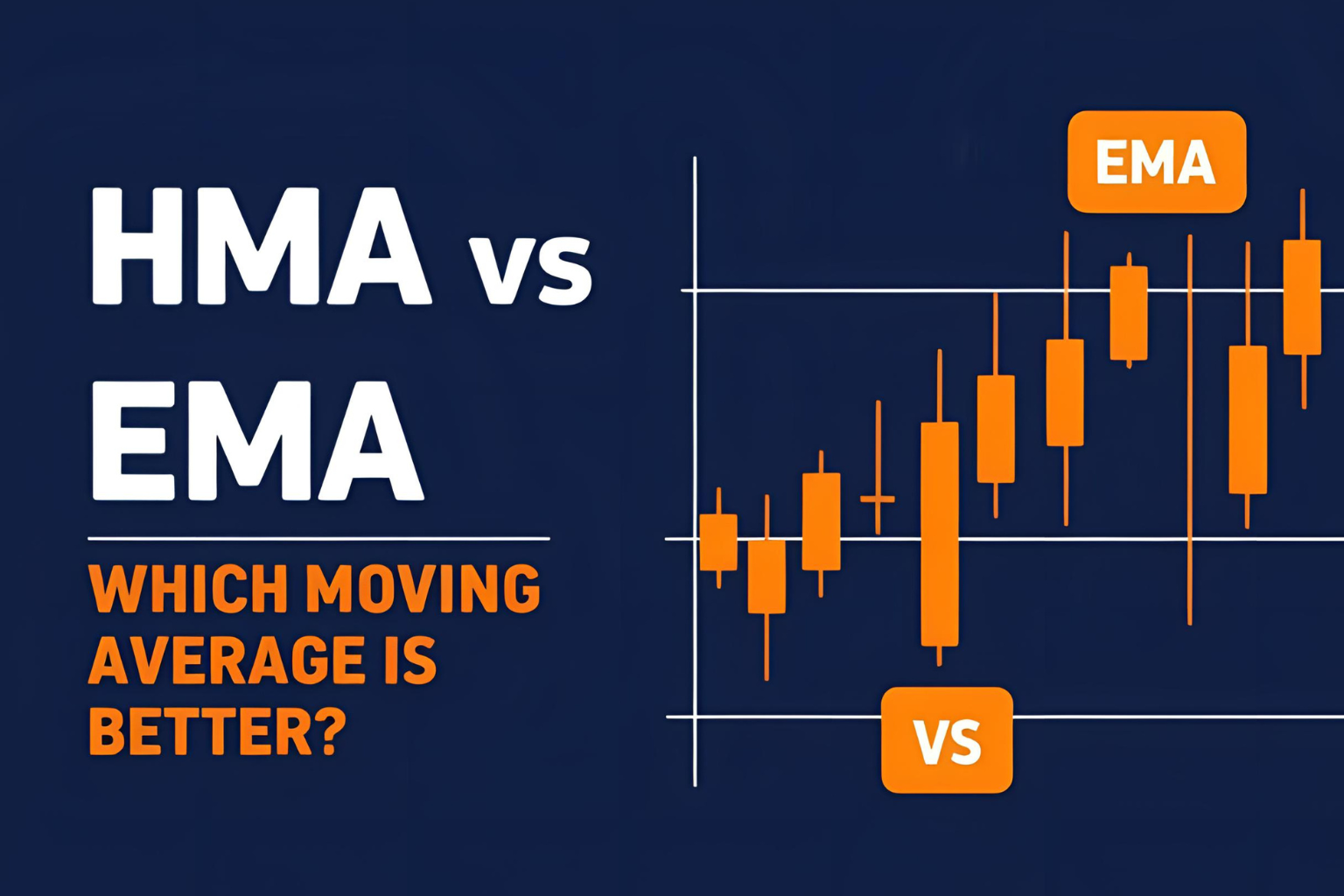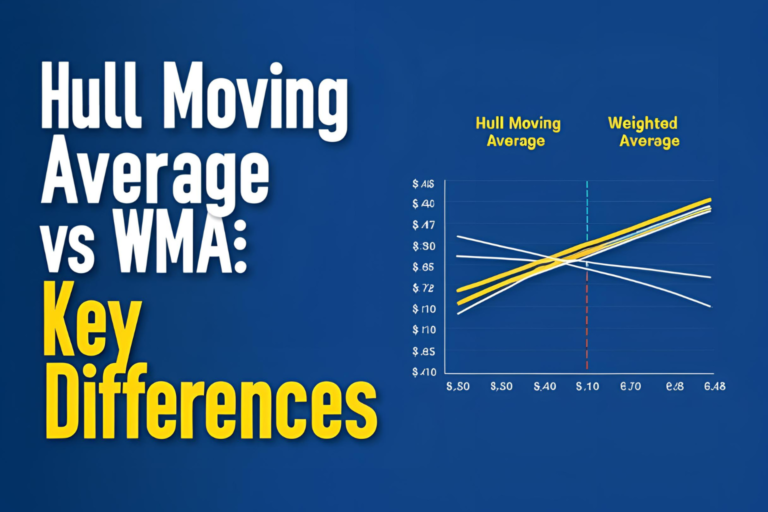HMA vs EMA: Which Moving Average is Better?
Choosing the right moving average can make or break your trading strategy. Two popular options are the Hull Moving Average (HMA) and the Exponential Moving Average (EMA). While both are used to identify trends and smooth price data, they differ in calculation, responsiveness, and use cases. In this article, we’ll break down the (HMA vs EMA) key differences between HMA and EMA, so you can decide which one is better for your trading goals.
What Is the EMA?
The Exponential Moving Average (EMA) gives more weight to recent price data, making it more responsive than a Simple Moving Average (SMA). It’s widely used by traders to detect short-term momentum and trend direction.
Learn more about EMA on Investopedia
What Is the HMA?
The Hull Moving Average (HMA), created by Alan Hull, is designed to reduce lag while maintaining smoothness. It uses a weighted average combined with a square root smoothing technique, offering a fast and clean trend signal.
Explore HMA strategies and usage on our Hull Moving Average Strategy PDF page.
Comparison Table: HMA vs EMA
| Feature | EMA | HMA |
|---|---|---|
| Speed | Moderate | Very Fast |
| Smoothness | Moderate (some noise) | Very Smooth |
| Calculation | Exponentially weighted | Weighted with square root smoothing |
| Lag | Some lag | Very low lag |
| Platform Support | Widely supported | Not always built-in (may need custom scripts) |
| Use Case | Short-term signals, momentum | Trend following, crossovers, scalping |
When to Use EMA
- For short-term momentum trades
- When using crossover strategies with other EMAs (e.g., 12/26 MACD)
- If your platform doesn’t support custom indicators
When to Use HMA
- For faster, cleaner trend identification
- To reduce false signals in ranging markets
- When you need both speed and smoothness
Can You Use Both Together?
Yes, many traders use both indicators together. For example:
- Use HMA for trend direction
- Use EMA for entry/exit timing or momentum confirmation
This combination can filter out noise while preserving responsive signals.
Conclusion: Which Is Better?
If you want fast, smooth, and low-lag signals — the HMA is the better choice. If you prefer a widely accepted tool that integrates with momentum indicators and crossover strategies — EMA is more universal.
The best solution? Test both and see which aligns with your trading style.
FAQs
1. Is the Hull Moving Average more accurate than EMA?
It’s often more responsive and less noisy, making it more effective in trending markets.
2. Do most platforms support HMA by default?
No, you may need to add it manually or use custom scripts, especially on platforms like MetaTrader or Thinkorswim.
3. Can I use HMA and EMA together?
Yes, combining them can provide stronger confirmation signals.
4. Which is better for crypto trading?
HMA often works better due to its low lag, but EMA is more widely available on exchanges.
5. Is HMA better than EMA for swing trading?
Yes, HMA tends to give cleaner signals over mid-term timeframes.

